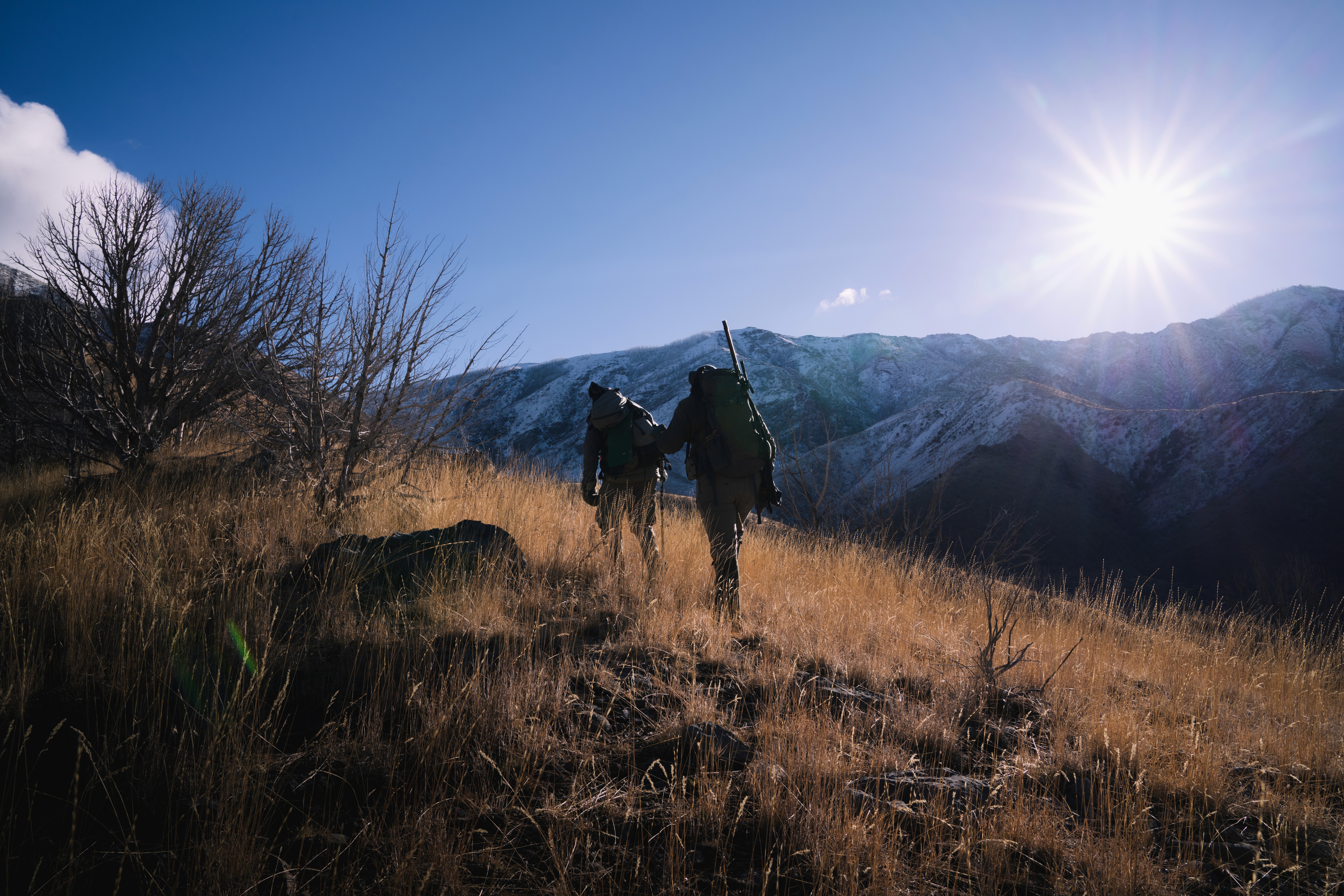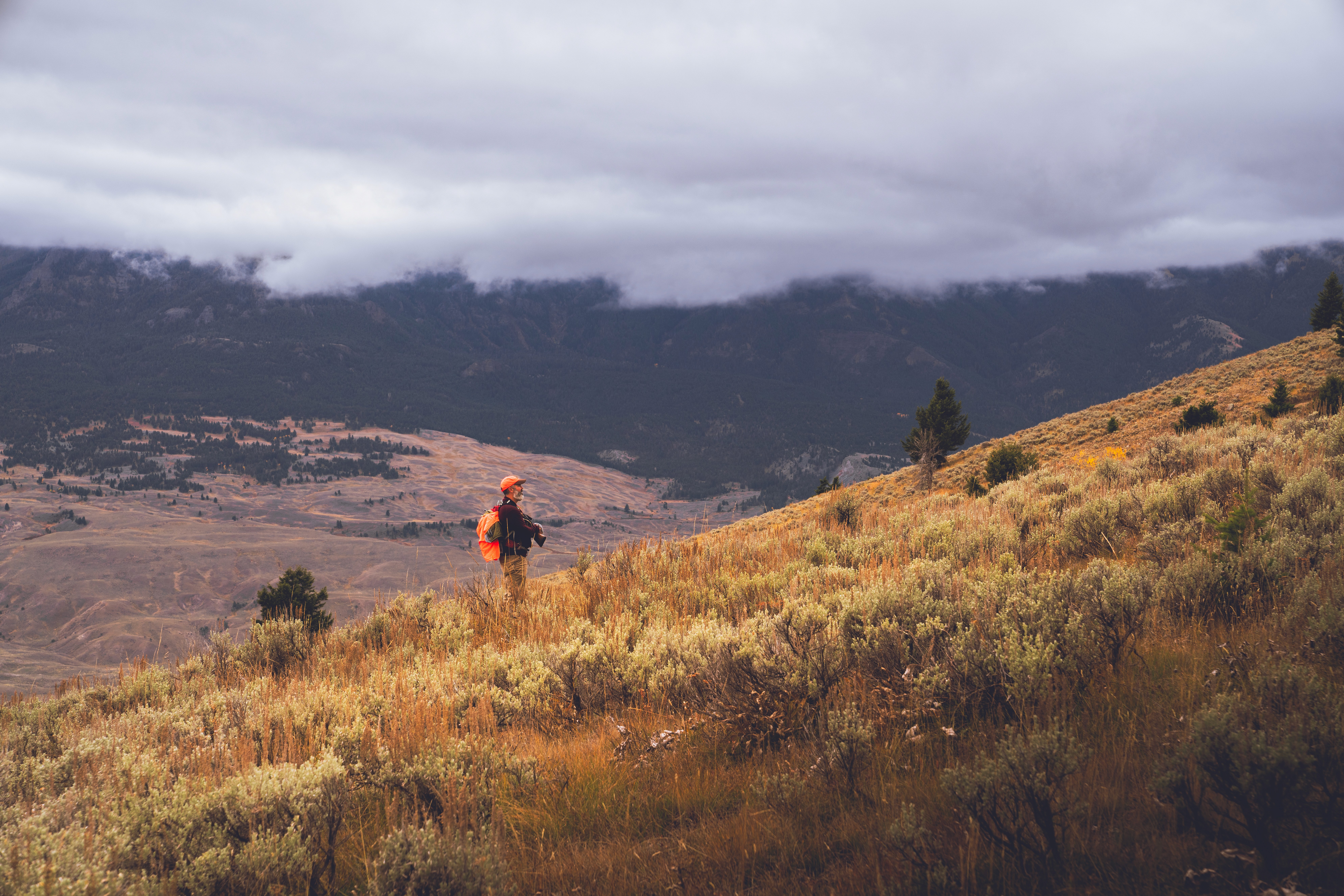



PackMule
Track Your Fitness, Not Your Feelings
That workout was great!
I nearly pooped all over myself; I sneezed bile, and I felt a couple organs shutting down!
That’s how you know it was a good training session, right? The feeling that your body can’t take anymore, that you’ve pushed to the brink. The lights start to go dim and you hear St. Peter unlocking the gate to heaven.
Yes, I’m being dramatic. But that level of drama feels necessary to combat the silliness in the hunting fitness realm. The workouts are obnoxiously and unnecessarily intense. And they’re sold to you as the truth. Do them, and you’ll be ready for the mountains. Do them, and you’ll be mentally tougher.
It ain’t so.
Now, I’ll tell you, it’s all good marketing. It’s a great play on our emotions – we’ll be the hero of our own story if we can just get through brutal workouts every time we hit the gym or the trail.
It’s a play on our in-built, misguided metric that leads us astray while working out. It says, if the workout is really fuckin’ hard, it must be giving me what I need. And if it’s not hard, it’s not worth doing.
It’s. Not. True.
There is a time and place for super hard workouts. But judging every workout by feeling is a recipe for training gaps and backcountry fitness sabotage. There’s a better way to think about fitness.
Let’s talk about it.
Time is on Your Side
I’ll often quip, that life is just as long as it is short.
I say it when folks make a mistake that feels like a permanent setback. We all have time to change. There’s no hole we can’t dig ourselves out of – if only by a shift in mindset in how we think about the hole.
But life is long in another way. Good things take time and lasting rewards are rarely immediate. This is true of training.
Consider this:
It takes 8 to 12 weeks to get sustainable results from an aerobic development program.
It takes 8 to 12 weeks to get sustainable results from a strength program.
And those timeframes are just the beginning. You can make aerobic and strength progress for decades. That’s right, sports fans, decades.
So, in that way, time is on your side. But, here’s the catch, you must fight the need to feel like every session is a beat down. Training that way will give you short-term gains over the course of four to six weeks. Then you’ll poop right in your own bed and kill your long-term progress.
All good things take time. All good things require at least a little faith that they’ll work out in the end, even if you can’t see it right now.
Instead of seeking the immediate reward of a brutal workout, reward yourself for showing up every day and for the patience it takes to build long-term fitness.
Now, you don’t need to sit around waiting for the day your fitness shows up. There are things you should consistently measure to see progress.
Fitness Over Feelings: Measurements That Matter
Before we get into measurements that matter, it’s necessary to talk about what fitness qualities that matter for backcountry and mountain hunting. Otherwise, what are we measuring?
Here’s our short list:
-Movement capacity (mobility)...we focus on the shoulders, hips, and ankles
-Relative strength…your strength output relative to your body weight
-Aerobic capacity…how well your aerobic system produces energy over time
-Aerobic power…how quickly your aerobic system produces energy
If you don’t move well, you waste a lot of energy. If you’re not strong enough, every movement costs you more than it should and your body is less resilient. Short on aerobic capacity and aerobic power? You’ll have poor endurance and you won’t recover well between workouts or hunting days.
These are the things we need during each hunt and for longevity. It’s important to remember that these things take some time to change, but you can change them for a long time. We test these every 13 to 17 weeks with our Backcountry Readiness Assessment. But there are other trends we watch between testing weeks.
First is resting heart rate. If your resting heart rate trends lower, then you’re likely improving your aerobic fitness and your recovery. Your true resting heart rate is the lowest heart rate your body achieves during sleep. But you can also measure it first thing in the morning upon waking.
The second is HRV (heart rate variability). If your heart rate variability increases, then you’re also likely improving your aerobic fitness and your recovery. There are exceptions to this. But, it holds true for the most part.
The third is consistency. Track how many workouts you’re consistently doing. Consistency is the granddaddy of all physical progress. Measure it and make it visible via an app or by ticking off days on a calendar. This is THE most important metric for long-term success.
Measuring these things helps combat the need to make every workout a fight in a phone booth. You have real metrics to kick you the real deal rather than relying on how each individual workout feels. Data > feelings. (Thanks, Layne Norton.)
Consistency + Volume > Intensity
Consistency and accrued training volume give you lasting change. But you can’t be consistent and accrue meaningful volume if every workout leaves you in a heap.
You must fight your feelings and focus on what’s necessary – smart training over the long haul.
If you do that, chances are you’ll keep moving your bones around the mountains for decades. But if you choose to keep on with the bile sneezing workouts, chances are you’ll end up backsliding while wondering why all your training didn’t help.
Don’t backslide. Stay consistent. Use metrics. Track your fitness, not your feelings.
(Click HERE to checkout our flagship program Backcountry Ready.)
Recent posts
Related Articles

Fitness Tips
Dec 21, 2025
Honest Efforts: Don't Mail In Meaningful Work
Despite all of this, I think everyone can agree that training involves effort. Zoom out and look at what humans are physically capable of and it's really amazing what sustained effort in any direction leads to. Ballet dancers, endurance athletes, baseball players, F1 drivers - just a few of the many testaments to sustained effort over time. While most of us aren’t trying to be the next Ohtani or Verstappen, we can take one lesson with us - consistent effort drives outcomes.

Fitness Tips
Dec 21, 2025
Honest Efforts: Don't Mail In Meaningful Work
Despite all of this, I think everyone can agree that training involves effort. Zoom out and look at what humans are physically capable of and it's really amazing what sustained effort in any direction leads to. Ballet dancers, endurance athletes, baseball players, F1 drivers - just a few of the many testaments to sustained effort over time. While most of us aren’t trying to be the next Ohtani or Verstappen, we can take one lesson with us - consistent effort drives outcomes.

Fitness Tips
Dec 21, 2025
Honest Efforts: Don't Mail In Meaningful Work
Despite all of this, I think everyone can agree that training involves effort. Zoom out and look at what humans are physically capable of and it's really amazing what sustained effort in any direction leads to. Ballet dancers, endurance athletes, baseball players, F1 drivers - just a few of the many testaments to sustained effort over time. While most of us aren’t trying to be the next Ohtani or Verstappen, we can take one lesson with us - consistent effort drives outcomes.

Mountain Hunting
Dec 15, 2025
How to Test Your Uphill Muscular Endurance for Mountain Hunting
Mountain hunting is a lot of things. It’s an adventure and for many hunters it’s a rite of passage. It’s a challenge of skill, a test of will, and, oftentimes, an experience that at least borders the spiritual. It is also an endeavor that requires a huge amount of muscular endurance. It’s tough to build your uphill muscular endurance to the right levels without knowing where you currently stand and what kind of training will move the needle for you. So, let’s learn you up on how to test your uphill muscle endurance for mountain hunting.

Mountain Hunting
Dec 15, 2025
How to Test Your Uphill Muscular Endurance for Mountain Hunting
Mountain hunting is a lot of things. It’s an adventure and for many hunters it’s a rite of passage. It’s a challenge of skill, a test of will, and, oftentimes, an experience that at least borders the spiritual. It is also an endeavor that requires a huge amount of muscular endurance. It’s tough to build your uphill muscular endurance to the right levels without knowing where you currently stand and what kind of training will move the needle for you. So, let’s learn you up on how to test your uphill muscle endurance for mountain hunting.

Mountain Hunting
Dec 15, 2025
How to Test Your Uphill Muscular Endurance for Mountain Hunting
Mountain hunting is a lot of things. It’s an adventure and for many hunters it’s a rite of passage. It’s a challenge of skill, a test of will, and, oftentimes, an experience that at least borders the spiritual. It is also an endeavor that requires a huge amount of muscular endurance. It’s tough to build your uphill muscular endurance to the right levels without knowing where you currently stand and what kind of training will move the needle for you. So, let’s learn you up on how to test your uphill muscle endurance for mountain hunting.

Mountain Hunting
Dec 10, 2025
The Toughest Hunt on Earth: Himalayan Blue Sheep Expedition
“It’s truly an expedition. I’d even say it’s the purest hunt on earth.” This wasn’t the first time Trey Sperring and I had talked about hunting blue sheep in Nepal. It wasn’t even the second. The first was during our mutual friend and client, John Mark Prewitt’s, California Big Horn hunt in November 2024. Since then, we’ve texted about it, mentioned it on phone calls, and even discussed it during episode 74 of the Packmule Podcast. It is a conversational thread running through our friendship.

Mountain Hunting
Dec 10, 2025
The Toughest Hunt on Earth: Himalayan Blue Sheep Expedition
“It’s truly an expedition. I’d even say it’s the purest hunt on earth.” This wasn’t the first time Trey Sperring and I had talked about hunting blue sheep in Nepal. It wasn’t even the second. The first was during our mutual friend and client, John Mark Prewitt’s, California Big Horn hunt in November 2024. Since then, we’ve texted about it, mentioned it on phone calls, and even discussed it during episode 74 of the Packmule Podcast. It is a conversational thread running through our friendship.

Mountain Hunting
Dec 10, 2025
The Toughest Hunt on Earth: Himalayan Blue Sheep Expedition
“It’s truly an expedition. I’d even say it’s the purest hunt on earth.” This wasn’t the first time Trey Sperring and I had talked about hunting blue sheep in Nepal. It wasn’t even the second. The first was during our mutual friend and client, John Mark Prewitt’s, California Big Horn hunt in November 2024. Since then, we’ve texted about it, mentioned it on phone calls, and even discussed it during episode 74 of the Packmule Podcast. It is a conversational thread running through our friendship.

Fitness Tips
Dec 21, 2025
Honest Efforts: Don't Mail In Meaningful Work
Despite all of this, I think everyone can agree that training involves effort. Zoom out and look at what humans are physically capable of and it's really amazing what sustained effort in any direction leads to. Ballet dancers, endurance athletes, baseball players, F1 drivers - just a few of the many testaments to sustained effort over time. While most of us aren’t trying to be the next Ohtani or Verstappen, we can take one lesson with us - consistent effort drives outcomes.

Mountain Hunting
Dec 15, 2025
How to Test Your Uphill Muscular Endurance for Mountain Hunting
Mountain hunting is a lot of things. It’s an adventure and for many hunters it’s a rite of passage. It’s a challenge of skill, a test of will, and, oftentimes, an experience that at least borders the spiritual. It is also an endeavor that requires a huge amount of muscular endurance. It’s tough to build your uphill muscular endurance to the right levels without knowing where you currently stand and what kind of training will move the needle for you. So, let’s learn you up on how to test your uphill muscle endurance for mountain hunting.


